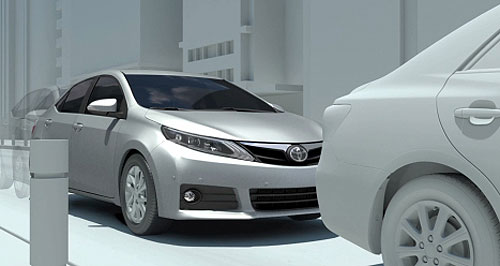Toyota boosts safety equipment
BY TUNG NGUYEN | 27th Nov 2014

According to the Japanese car-maker, its Integrated Safety Management Concept will improve road safety through the use of wireless frequencies that will allow vehicles to “talk” to each other and the road, giving drivers a better understanding of their surroundings.
Toyota will be offering Safety Sense active safety options on its future models, dividing them into the C package for mid-sizers and P package for larger vehicles.
These packages include Toyota's Pre-Crash Safety system that scans the road ahead and can warn drivers and even apply the brakes if it detects a collision is imminent, as well as Lane Keep Assist which is designed to warn drivers if the vehicle is straying out of lane. They also include automated high beam headlights.
The automated high beams will utilise Toyota's next-generation LED Array Adaptive High Beam technology, which uses independently controlled LEDs to light up the road and, according to Toyota, “light up the gaps between vehicles ahead and those approaching, making it easier to spot pedestrians.”The C and P Safety Sense packages will use a laser radar and millimetre-wave radar respectively in conjunction with a safety camera mounted on the front of the car to read the road ahead.
Lexus model will all receive a Lexus Safety System+ that includes a new Road Sign Assist function that can read and recognise road signs and speed limits, even overseas, and display them to the driver.
Toyota is also working with various government agencies and private companies to further integrate vehicle-to-infrastructure systems which will be able to, according to Toyota, “detect on-coming traffic or pedestrians crossing the road and send the information to your car,” by using various cameras and sensors mounted alongside roads.
The car-making giant has also highlighted its vehicle-to-vehicle safety technologies which could allow approaching vehicles to “signal their presence using the vehicle-to-vehicle link, activating visual and audio driver warnings when necessary to help prevent an accident.”Toyota's newly developed Communicating Radar Cruise Control will take full advantage of vehicle-to-vehicle communications by using it in conjunction with a millimetre-wave radar to monitor and track not only the vehicle ahead, but traffic conditions further along, allowing the cruise control system to adapt to a larger traffic picture.

